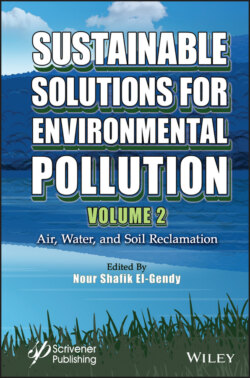Читать книгу Sustainable Solutions for Environmental Pollution, Volume 2 - Группа авторов - Страница 52
1.12.2 Noxious Gases
ОглавлениеWastewater rich in OM and mineral compounds such as sulfates and phosphates can be anaerobically reduced to form noxious gases such as hydrogen sulfide (H2S) or phosphine (PH3). The property of sulfide ion to form insoluble precipitates with heavy metal ions makes it an excellent immobilizing agent for toxic metals in the bottom sediments. However, high sulfide concentrations can have a negative effect on wetland plant growth and microbial activity, particularly nitrification (Wu et al., 2013). H2S is a toxic and foul-smelling gas highly toxic to mammals (including humans) and aquatic species. The creation of dynamic oxidation-reduction gradients (aerobic-anaerobic) in the rhizosphere of CWs can simultaneously produce nitrification/denitrification and anaerobic ammonium oxidation (Anammox) and sulfur oxidation/reduction conditions that allow sulfide removal (Gonzalias et al., 2007; Jones et al., 2017). Bacteria such as Desulfovibrio and Desulfobacter and Archaea, such as Archaeoglobus are able to reduce sulfate in anaerobic conditions: these conditions can be obtained for example when a surface-flow wetland is completely covered by free-floating plants (such as duckweed). The flora of aquatic systems (including wetlands) is diversely sensitive to sulfide. Threshold values between 10 µmol/L (for Carex sp.) and 1500 µmol/L (for P. australis) have been reported (Lamers et al., 2013).
The natural phenomenon known as “Ignis fatuus” or “Will-o’-the-wisp” (flickering glows observed during night on bogs and swamps) is due to the spontaneous ignition of phosphine (swamp gas) in the presence of methane resulting from the decomposition of OM under anaerobic conditions (Roels and Verstraete, 2001). Indeed, anaerobic wetlands are capable of producing phosphites and PH3 from phosphate (Bains et al., 2019). The former has been detected in marsh gas (Dévai and Delaune, 1995; Geng et al., 2005), paddy fields (Niu et al., 2013), and wastewater and sewage (Devai et al., 1999). The matrix-bound PH3 has been detected in various types of sediments in estuaries and coastal areas (Zhu et al., 2011).
